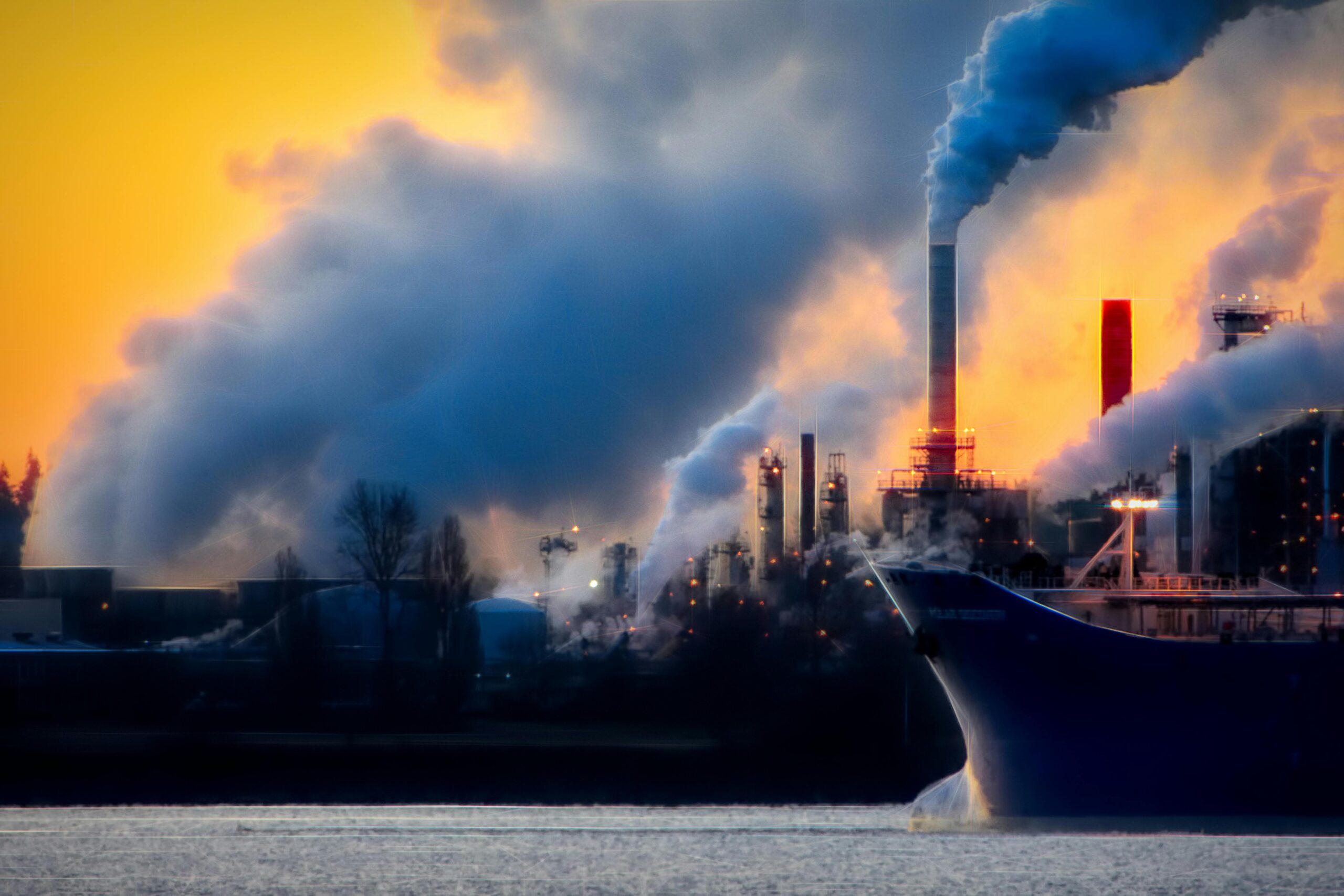Air pollution is one of the most pressing environmental and health challenges facing the world today. It affects the air we breathe, the water we drink, and the ecosystems we depend on. Fine particulate matter, known as PM2.5, is particularly dangerous because these tiny particles can penetrate deep into the lungs and even enter the bloodstream, causing serious health issues like respiratory diseases, heart problems, and premature death. The World Health Organization (WHO) estimates that air pollution is responsible for one in nine deaths globally, with 99% of the world’s population living in areas that exceed WHO’s air quality guidelines.
In 2025, air pollution remains a critical issue, particularly in certain countries where industrial activities, urbanization, and environmental factors contribute to dangerously high levels of PM2.5. This article explores the top 10 most polluted countries in the world in 2025, based on the latest data from sources like the IQAir World Air Quality Report and other reliable environmental studies. We’ll dive into the causes of pollution, its health and environmental impacts, and what these countries are doing—or could do—to address this crisis. This guide is written for all audiences, from concerned citizens to policymakers, in a simple and engaging way to raise awareness about this global issue.
𝟭. 𝗖𝗵𝗮𝗱 (𝗣𝗠𝟮.𝟱: 𝟵𝟭.𝟴 µ𝗴/𝗺³)
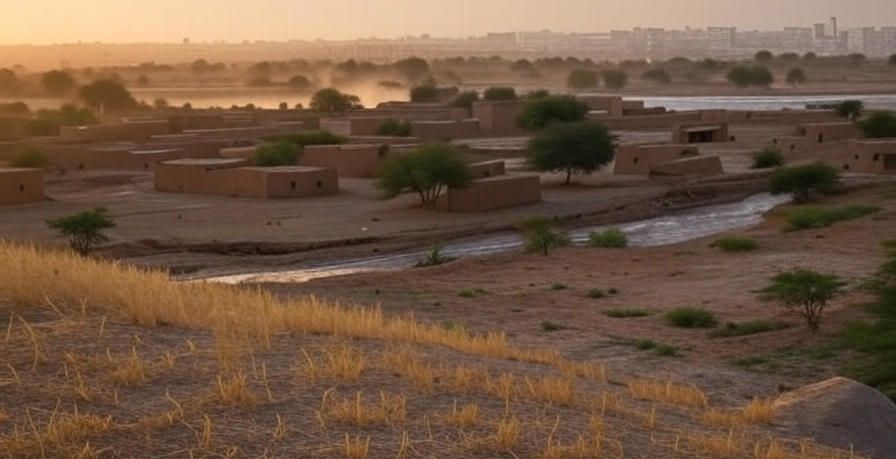
✓ Overview: Chad tops the list as the most polluted country in the world in 2025, with an average PM2.5 concentration of 91.8 µg/m³, a staggering 18 times higher than the WHO’s recommended limit of 5 µg/m³. This landlocked African nation faces unique environmental challenges that make clean air nearly impossible to find.
✓ Causes of Pollution: Chad’s air pollution is driven by a combination of natural and human-made factors. Frequent dust storms, fueled by extreme drought and desertification, release massive amounts of particulate matter into the air. Additionally, widespread burning of wood and charcoal for cooking and heating, especially in rural areas, contributes significantly to PM2.5 levels. Poor infrastructure and limited access to clean energy sources exacerbate the problem.
✓ Health and Environmental Impacts: The high PM2.5 levels in Chad pose severe health risks, including respiratory infections, lung cancer, and cardiovascular diseases. Children and the elderly are particularly vulnerable. Environmentally, air pollution contributes to soil degradation and reduced agricultural productivity, worsening food insecurity in an already impoverished nation.
✓ Efforts to Combat Pollution: Chad’s government faces significant challenges due to limited resources, but efforts are underway to promote cleaner cooking technologies, such as solar stoves, to reduce reliance on biomass burning. International organizations are also supporting reforestation and desertification control projects to mitigate dust storms.
𝟮. 𝗕𝗮𝗻𝗴𝗹𝗮𝗱𝗲𝘀𝗵 (𝗣𝗠𝟮.𝟱: 𝟳𝟱–𝟴𝟯.𝟯 µ𝗴/𝗺³)
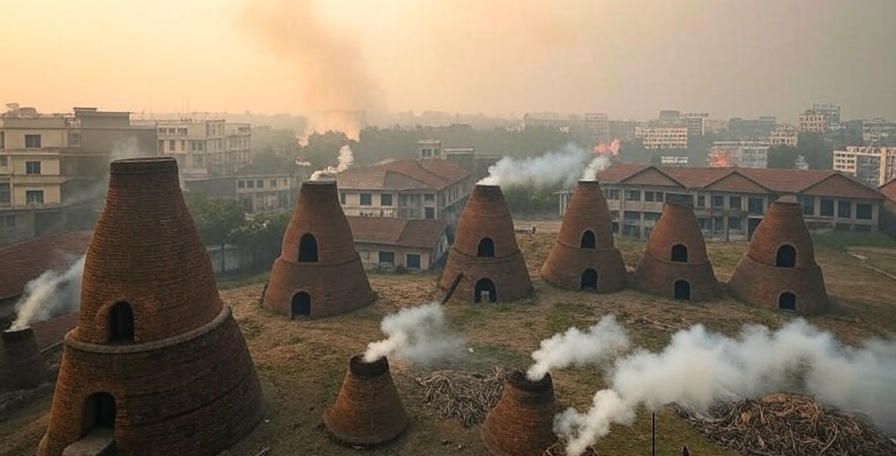
✓ Overview: Bangladesh ranks as one of the most polluted countries, with PM2.5 levels ranging from 75 to 83.3 µg/m³ in 2024–2025, making it 15–16 times higher than WHO guidelines. Dhaka, the capital, is one of the world’s most polluted cities, with brick kilns and industrial emissions choking the air.
✓ Causes of Pollution: The country’s air quality is severely impacted by its brickmaking industry, which produces 23 billion bricks annually and relies heavily on coal. Vehicle emissions, construction dust, and biomass burning for cooking further contribute to the smog, especially during winter months when air quality worsens.
✓ Health and Environmental Impacts: Exposure to high PM2.5 levels in Bangladesh is linked to shortened life expectancy, respiratory diseases, and cardiovascular issues. The WHO estimates that air pollution causes thousands of premature deaths annually. Environmentally, the smog contributes to acid rain and ecosystem damage, affecting agriculture and water bodies.
✓ Efforts to Combat Pollution: Bangladesh has made some progress, with PM2.5 levels dropping from 97.1 µg/m³ in 2018 to 65.8 µg/m³ in 2022. The government is promoting cleaner brick kiln technologies and stricter vehicle emission standards. However, challenges like rapid urbanization and industrial growth make sustained improvement difficult.
𝟯. 𝗣𝗮𝗸𝗶𝘀𝘁𝗮𝗻 (𝗣𝗠𝟮.𝟱: 𝟱𝟱–𝟳𝟯.𝟳 µ𝗴/𝗺³)
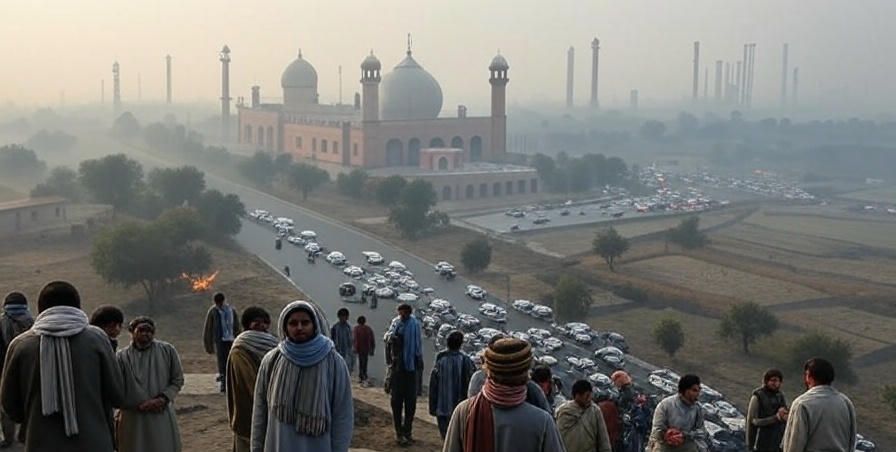
✓ Overview: Pakistan ranks third, with PM2.5 levels between 55 and 73.7 µg/m³, up to 14 times above WHO standards. Cities like Lahore and Karachi frequently experience thick winter smog, making air quality hazardous.
✓ Causes of Pollution: Major sources include industrial emissions, heavy traffic, and agricultural crop burning, particularly in Punjab. Seasonal smog, worsened by temperature inversions, traps pollutants in urban areas. The lack of stringent regulations and reliance on fossil fuels further aggravate the issue.
✓ Health and Environmental Impacts: Air pollution in Pakistan is linked to respiratory diseases, allergies, and thousands of premature deaths annually. Children in urban areas face developmental risks due to prolonged exposure. Environmentally, pollution contributes to soil and water contamination, impacting agriculture.
✓ Efforts to Combat Pollution: Pakistan has introduced measures like seasonal bans on crop burning and investments in public transportation to reduce vehicle emissions. However, enforcement remains weak, and more robust policies are needed to address industrial and agricultural pollution.
𝟰. 𝗗𝗲𝗺𝗼𝗰𝗿𝗮𝘁𝗶𝗰 𝗥𝗲𝗽𝘂𝗯𝗹𝗶𝗰 𝗼𝗳 𝘁𝗵𝗲 𝗖𝗼𝗻𝗴𝗼 (𝗣𝗠𝟮.𝟱: ~𝟱𝟬 µ𝗴/𝗺³)
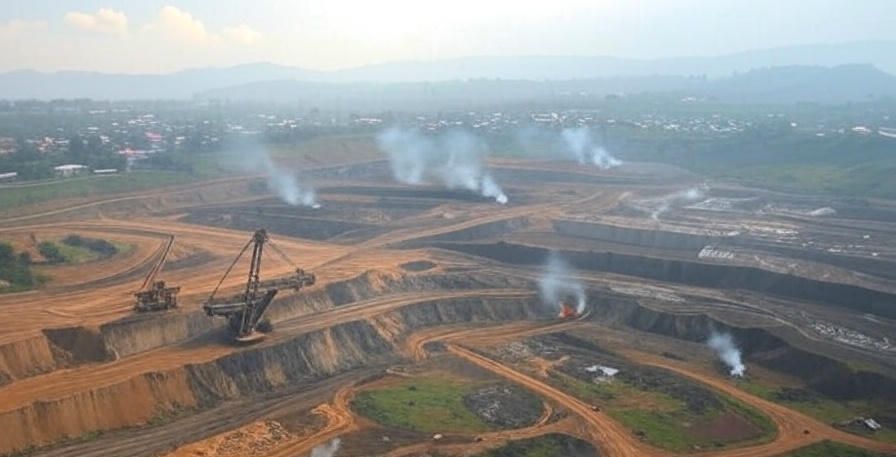
✓ Overview: The Democratic Republic of the Congo (DRC) is among the top polluted countries, with PM2.5 levels around 50 µg/m³, about 10 times the WHO guideline. Urban areas like Kinshasa face severe air quality challenges.
✓ Causes of Pollution: Mining activities, deforestation, and biomass burning for cooking and heating are major contributors. Unregulated industrial emissions and rapid urbanization also play a role, with limited air quality monitoring infrastructure to track the problem.
✓ Health and Environmental Impacts: High PM2.5 levels contribute to respiratory and cardiovascular diseases, particularly in densely populated urban areas. Deforestation and pollution harm the DRC’s rich ecosystems, threatening biodiversity in the Congo Basin.
✓ Efforts to Combat Pollution: The DRC’s efforts are limited by economic constraints, but international aid is supporting cleaner energy initiatives and reforestation programs. Expanding air quality monitoring is critical to inform policy changes.
𝟱. 𝗜𝗻𝗱𝗶𝗮 (𝗣𝗠𝟮.𝟱: 𝟱𝟬.𝟲 µ𝗴/𝗺³)
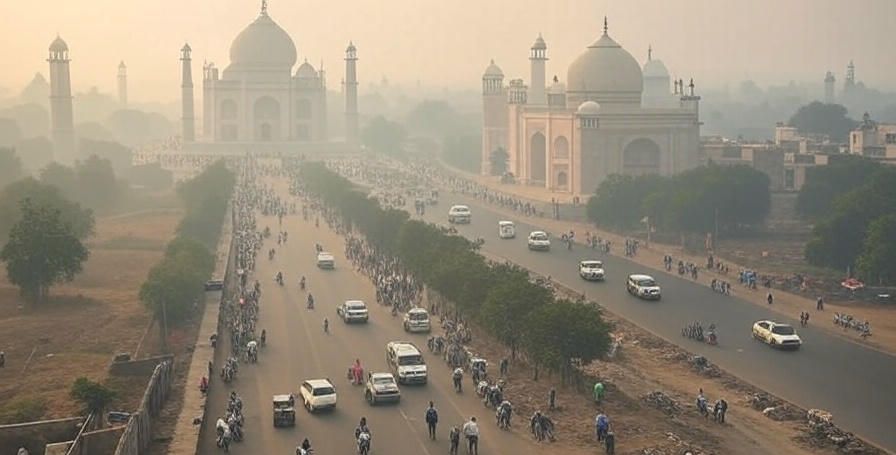
✓ Overview: India ranks fifth, with an average PM2.5 concentration of 50.6 µg/m³ in 2024, a slight improvement from 54.4 µg/m³ in 2023. The country is home to 13 of the world’s 20 most polluted cities, including New Delhi, the most polluted capital in 2025.
✓ Causes of Pollution: India’s air pollution stems from vehicle emissions, industrial activities, construction dust, and crop burning in states like Punjab and Haryana. Urban areas like Delhi and Noida suffer from year-round pollution, worsened by seasonal factors like winter smog.
✓ Health and Environmental Impacts: Air pollution in India causes respiratory conditions, heart disease, and developmental issues in children. The WHO estimates it contributes to millions of premature deaths annually. Environmentally, pollution leads to acid rain, soil degradation, and reduced crop yields.
✓ Efforts to Combat Pollution: India has expanded its air quality monitoring network, operating over half of South Asia’s stations. The government is promoting electric vehicles, renewable energy, and stricter industrial regulations, but challenges like population growth and urbanization hinder progress.
𝟲. 𝗧𝗮𝗷𝗶𝗸𝗶𝘀𝘁𝗮𝗻 (𝗣𝗠𝟮.𝟱: ~𝟰𝟱 µ𝗴/𝗺³)
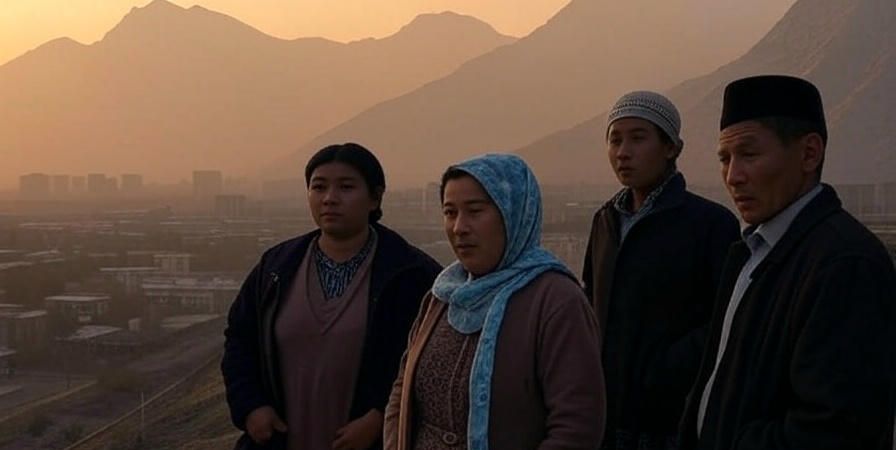
✓ Overview: Tajikistan ranks sixth, with PM2.5 levels around 45 µg/m³, nine times above WHO guidelines. The capital, Dushanbe, faces significant air quality issues.
✓ Causes of Pollution: Coal-powered plants, industrial waste, and poor urban planning contribute to pollution. The country’s mountainous terrain traps pollutants, particularly in winter, worsening air quality in urban areas.
✓ Health and Environmental Impacts: Residents face increased risks of respiratory and cardiovascular diseases. Pollution also affects water quality and agriculture, critical for Tajikistan’s economy.
✓ Efforts to Combat Pollution: Tajikistan is exploring renewable energy options like hydropower, given its abundant water resources. However, limited funding and infrastructure challenges slow progress.
𝟳. 𝗡𝗲𝗽𝗮𝗹 (𝗣𝗠𝟮.𝟱: ~𝟰𝟬 µ𝗴/𝗺³)
✓ Overview: Nepal ranks seventh, with PM2.5 levels around 40 µg/m³, eight times higher than WHO standards. Kathmandu, the capital, is one of the world’s most polluted cities.
✓ Causes of Pollution: Construction dust, vehicle emissions, and wildfire smoke trapped in the Himalayan valley contribute to Kathmandu’s smog. Biomass burning for cooking in rural areas also adds to the problem.
✓ Health and Environmental Impacts: Air pollution in Nepal increases respiratory illnesses and cardiovascular risks, particularly for children and the elderly. It also harms ecosystems, affecting tourism and agriculture.
✓ Efforts to Combat Pollution: Nepal is promoting cleaner cooking stoves and electric vehicles. International partnerships are supporting air quality monitoring and sustainable urban planning.
𝟴. 𝗕𝘂𝗿𝗸𝗶𝗻𝗮 𝗙𝗮𝘀𝗼 (𝗣𝗠𝟮.𝟱: ~𝟰𝟬 µ𝗴/𝗺³)
✓ Overview: Burkina Faso ranks eighth, with PM2.5 levels around 40 µg/m³. The country faces similar challenges to Chad, with dust storms and biomass burning driving pollution.
✓ Causes of Pollution: Desertification, biomass burning for cooking, and unregulated mining activities contribute to high PM2.5 levels. Urban areas like Ouagadougou see worsening air quality due to rapid growth.
✓ Health and Environmental Impacts: Pollution causes respiratory issues and increases healthcare costs in a country with limited medical resources. Environmental degradation worsens food and water security.
✓ Efforts to Combat Pollution: International aid is supporting reforestation and clean energy projects, but political instability and poverty limit progress.
𝟵. 𝗨𝘇𝗯𝗲𝗸𝗶𝘀𝘁𝗮𝗻 (𝗣𝗠𝟮.𝟱: 𝟰𝟭.𝟮 µ𝗴/𝗺³)
✓ Overview: Uzbekistan ranks ninth, with a PM2.5 concentration of 41.2 µg/m³. This Central Asian nation faces significant air quality challenges in urban areas.
✓ Causes of Pollution: Industrial emissions, vehicle exhaust, and coal-based heating systems are major contributors. Dust storms from the drying Aral Sea also add to the problem.
✓ Health and Environmental Impacts: Air pollution increases respiratory and cardiovascular diseases, particularly in cities like Tashkent. The Aral Sea crisis exacerbates environmental damage, affecting agriculture and water resources.
✓ Efforts to Combat Pollution: Uzbekistan is investing in renewable energy and improving industrial regulations. Regional cooperation to address the Aral Sea crisis is also underway.
𝟭𝟬. 𝗜𝗿𝗮𝗾 (𝗣𝗠𝟮.𝟱: 𝟯𝟵.𝟲 µ𝗴/𝗺³)
✓ Overview: Iraq rounds out the top 10, with a PM2.5 concentration of 39.6 µg/m³. Cities like Baghdad face severe air quality issues.
✓ Causes of Pollution: Oil production, industrial emissions, and dust storms from desert regions contribute to pollution. Ongoing conflict and poor infrastructure hinder air quality management.
✓ Health and Environmental Impacts: Air pollution in Iraq is linked to respiratory diseases and premature deaths. It also contributes to soil and water contamination, affecting agriculture.
✓ Efforts to Combat Pollution: Iraq is working on modernizing its oil industry to reduce emissions, but progress is slow due to political and economic challenges.
𝗖𝗼𝗻𝗰𝗹𝘂𝘀𝗶𝗼𝗻
Air pollution is a silent killer, but it’s not an unsolvable problem. The top 10 most polluted countries in 2025 face significant challenges, but progress is possible with concerted efforts from governments, communities, and international organizations. By understanding the causes, impacts, and solutions, we can all play a role in creating a cleaner, healthier future. Whether you’re a policymaker, a student, or a concerned citizen, raising awareness and supporting sustainable practices can help ensure that clean air becomes a reality for everyone.

